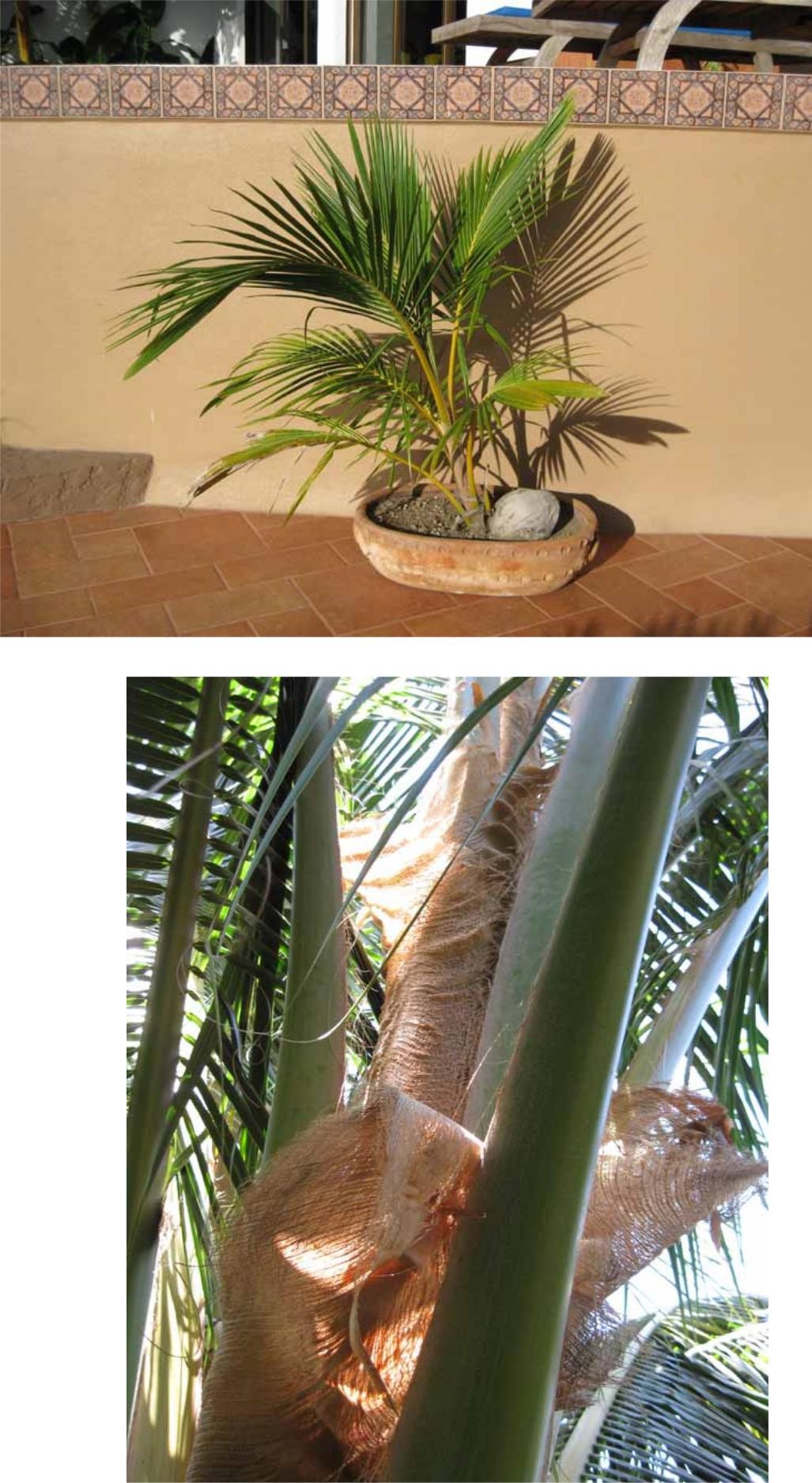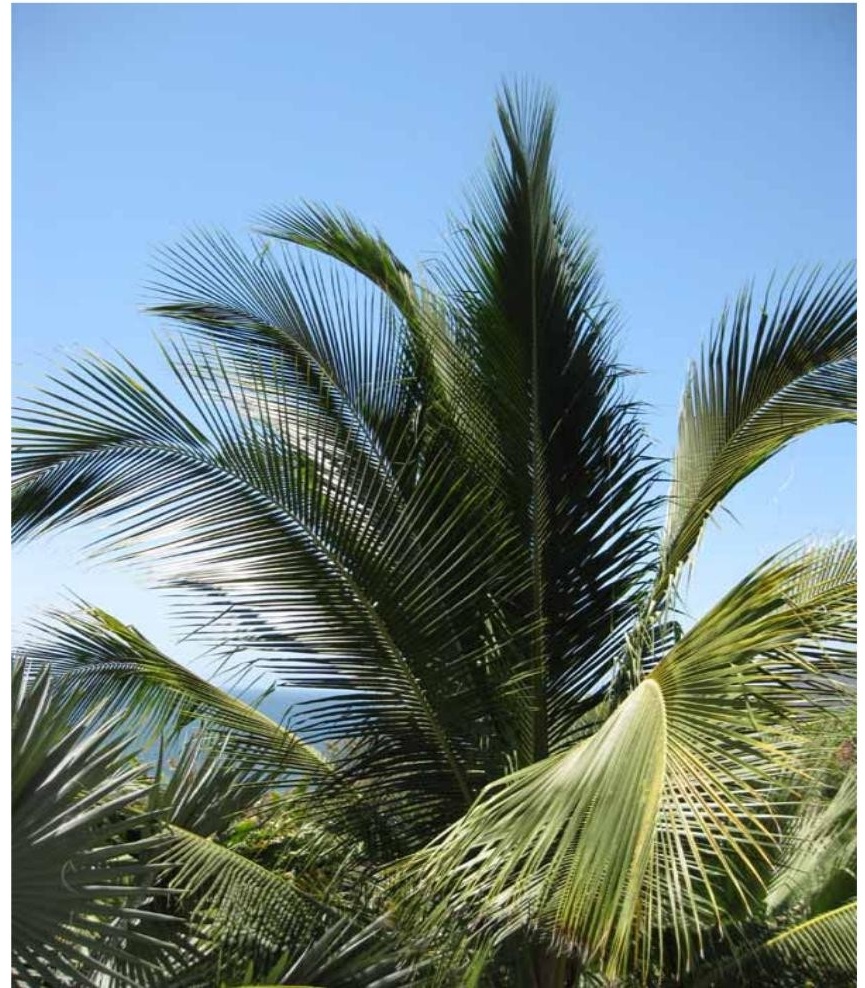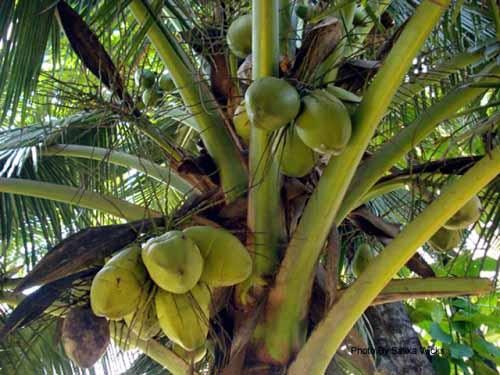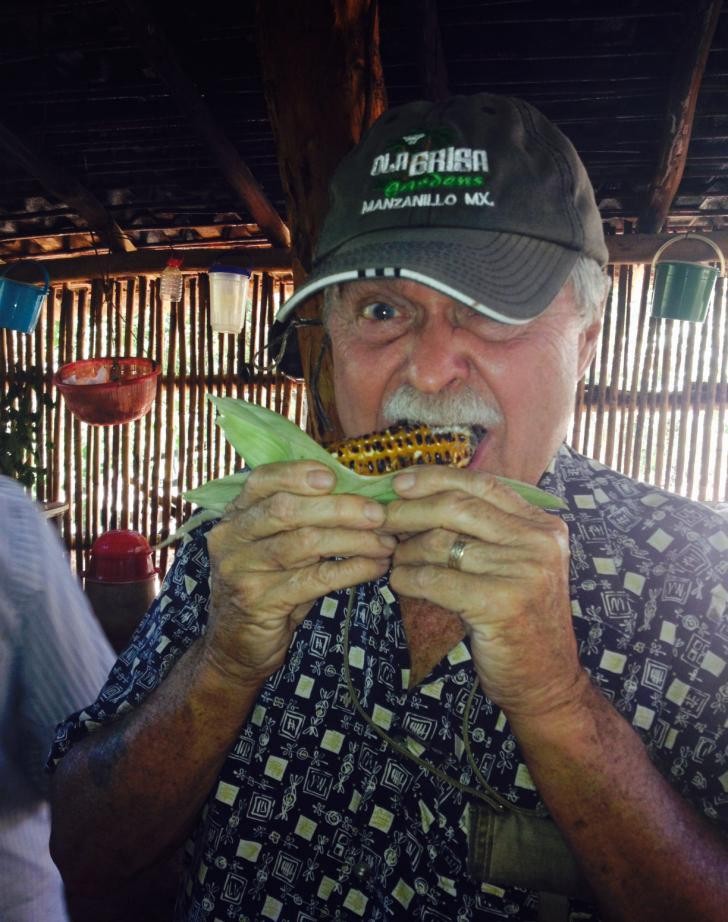By Tommy Clarkson from the June 2012 Edition
Cocos nucifera
Family: Arecaceae
Sub-family: Arecoideae
(Also known as the Cocos Nucifera, Coco Palm, Coconut Tree)
While there are around 1,500 different varieties of palms, when most people think of them, the Coconut is the species that generally first comes to mind. The most ubiquitous of all palm trees it is found more places than any other palm tree in the world. There are tall and dwarf varieties, with numerous hybrids. In fact, there is so much to tell about this great palm we are dedicating two months Manzanillo Sun issues to its story– and it’s still a chore to try to encapsulate it all!
While fossilized coconuts have been dug up in New Zealand it is known that the palm has been cultivated for over 4,000 years in India. Accordingly, botanists surmise that the species originated in the Indian Ocean area. Appropriately, it has often been called the “Tree of Life” or the “Tree of a Thousand Uses” with its ability to provide virtually everything required for human survival.


Initially this plant was named nux indica by Marco Polo in 1280. However, it is believed to have received its contemporary name from the Spanish and Portuguese explorers who thought that the brown, hairy and three “eyed” face of the coconut looked like a monkey or the witch Coco. The word “nut” was added when they were introduced in England. (Actually, the coconut isn’t really a nut at all. It’s a fruit called a drupe which is a fruit with an outer fleshy part surrounding a shell of hardened endocarp with a seed inside. In the “interesting to know” category, Coffee, Dates, mangos, cherries, peaches, plums, apricots, and nectarines are other drupes.)
Virtually every part of the coconut palm can be used in some manner – meaningful or frivolous. Beyond the hundreds of culinary and non-culinary uses of the coconut meat and its milk/juice, a few more are as follow:
Husks and shells can be used as potting compost (better than peat moss), mattress stuffing, fuel, source of charcoal, brushes, dish or body sponge, floor buffers, as a soup dish, fixed with a handle to be used as a ladle, its activated carbon well absorbs gas and vapor and removes impurities or odor, for creating the sound of horse hoof beats in the theatre, incorporated as the body for musical instruments, carved into shirt buttons, burnt as a mosquito repellant, stuffed in automobile arm rests, head rests and visors and, in the absence of paper, a husked coconut shell (now in the JFK Library) was the communication vehicle by which the crew of PT Boat 109 (delivered by dugout canoe) communicated its situation and location.
Trunks are used in the building of small bridges, walls, and roofs, found to be an ecologically sound substitute for must scarcer hardwoods, hollowed to make drums, containers and even canoes, and in the Solomon Islands, purportedly, the branches are sometimes used in the administration of corporal punishment.
Leaves/fronds beyond use as brooms, cooking skewers, kindling arrows, woven into baskets or hats, they have been used as roofing around the world, and burnt for ash and then harvested for lime – in fact, our Dining Palapa and Sunrise Palapa are covered with them.
Roots can be used as a dye, mouthwash and has medicinal properties to help those inflicted with dysentery. A frayed root also can be used as a toothbrush.
And, lastly, there have been many studies, published in an array of medical journals, confirming that the coconut may be the source of substantive and wide ranging health benefits. Beyond that, various parts of the coconut are used for scores of religious, decorative and simply fun purposes– ranging from bird feeders to (not so comfortable) halter tops. I’d dare not try to realize many of these (most of all the latter) from the basic backyard cottonwood trees of my youth!
But this is enough for today . . . stay tuned for more on coconuts next month!

Download the full edition or view it online
—
Tommy Clarkson is a bit of a renaissance man. He’s lived and worked in locales as disparate as the 1.2 square mile island of Kwajalein to war-torn Iraq, from aboard he and Patty’s boat berthed out of Sea Bright, NJ to Thailand, Germany, Hawaii and Viet Nam; He’s taught classes and courses on creative writing and mass communications from the elementary grades to graduate level; He’s spoken to a wide array of meetings, conferences and assemblages on topics as varied as Buddhism, strategic marketing and tropical plants; In the latter category he and Patty’s recently book, “The Civilized Jungle” – written for the lay gardener – has been heralded as “the best tropical plant book in the last ten years”; And, according to Trip Advisor, their spectacular tropical creation – Ola Brisa Gardens – is the “Number One Tour destination in Manzanillo”.




You must be logged in to post a comment.